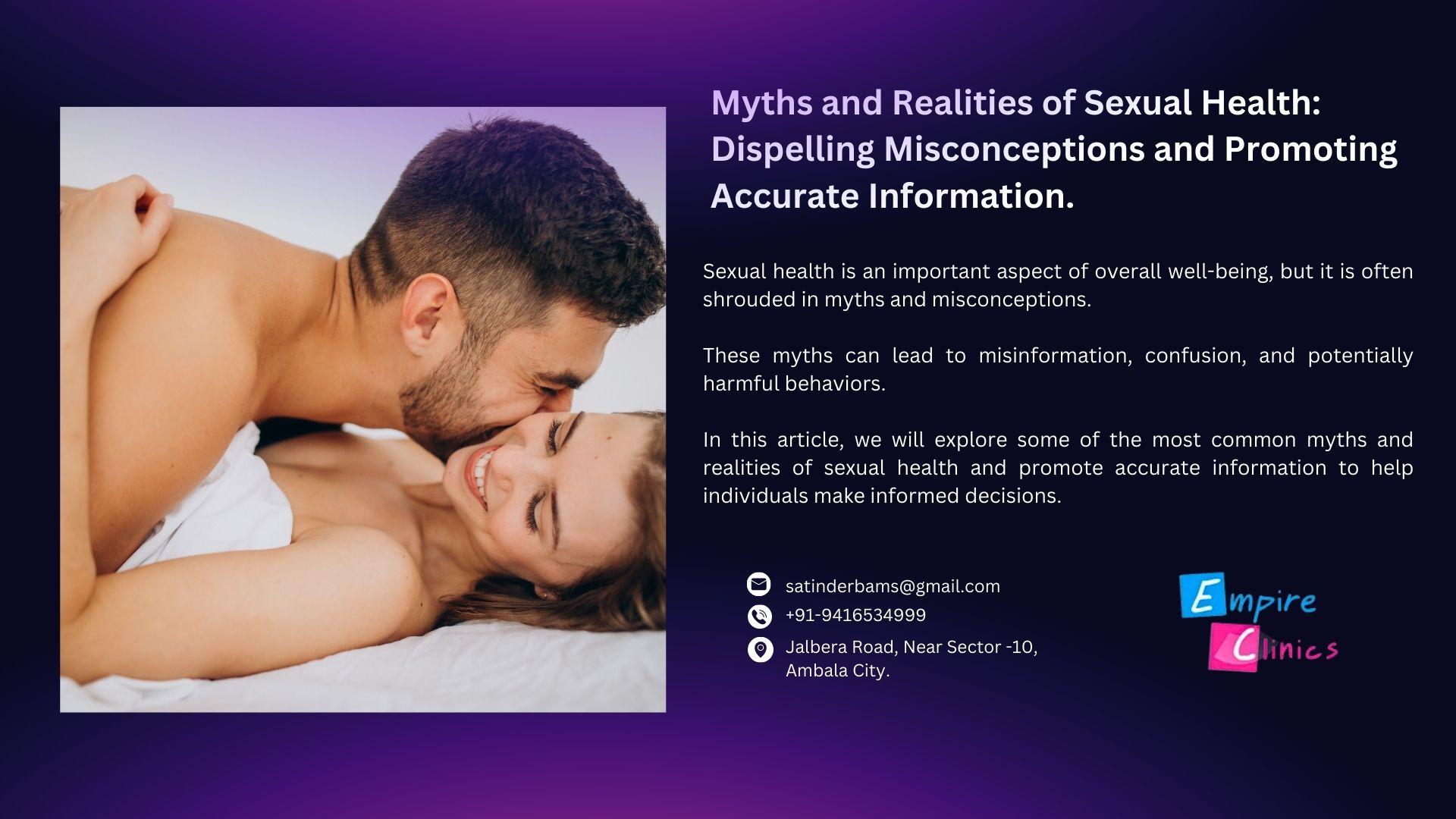Sexual health is an important aspect of overall well-being, but it is often shrouded in myths and misconceptions. These myths can lead to misinformation, confusion, and potentially harmful behaviors. In this article, we will explore some of the most common myths and realities of sexual health and promote accurate information to help individuals make informed decisions.
Myth: Sex is only for young people.
Reality: Sex is a natural and healthy part of life and is not limited to any particular age group. Older adults can enjoy fulfilling sexual experiences, and maintaining sexual health can have positive effects on overall well-being.
Myth: Contraception is only a woman's responsibility.
Reality: Contraception is a shared responsibility between partners. Both men and women can take an active role in preventing unwanted pregnancies and sexually transmitted infections (STIs). There are various contraceptive methods available, including condoms, oral contraceptives, and intrauterine devices (IUDs), among others.
Myth: Masturbation is unhealthy or immoral.
Reality: Masturbation is a natural and healthy way to explore one's own sexuality and can have positive effects on physical and emotional well-being. It is a safe alternative to sexual activity that can help prevent STIs and unintended pregnancies.
Myth: You can't get pregnant during your period.
Reality: While it is less likely to get pregnant during menstruation, it is still possible. Sperm can live in the female reproductive tract for up to five days, so if ovulation occurs shortly after menstruation, there is a chance of pregnancy. Using contraception is the best way to prevent unwanted pregnancy.
Myth: Only gay men can get HIV.
Reality: HIV does not discriminate based on sexual orientation or gender. Anyone who engages in unprotected sex or shares needles can contract HIV. It is important to practice safe sex and get tested regularly for STIs.
Myth: Erectile dysfunction (ED) is a normal part of aging.
Reality: While ED is more common in older men, it is not a normal part of aging. ED can be a sign of underlying health issues such as diabetes, hypertension, or cardiovascular disease. Seeking medical attention can help identify and treat the root cause of ED.
Myth: You can't get an STI if you only have oral sex.
Reality: Oral sex can transmit STIs such as herpes, gonorrhea, and syphilis. Using protection such as condoms or dental dams can help prevent the spread of STIs during oral sex.
Conclusion
Dispelling myths and promoting accurate information about sexual health is essential for promoting healthy sexual behaviors and preventing negative health outcomes. Understanding the realities of sexual health and taking steps to prevent STIs and unintended pregnancies can lead to a fulfilling and satisfying sex life.







